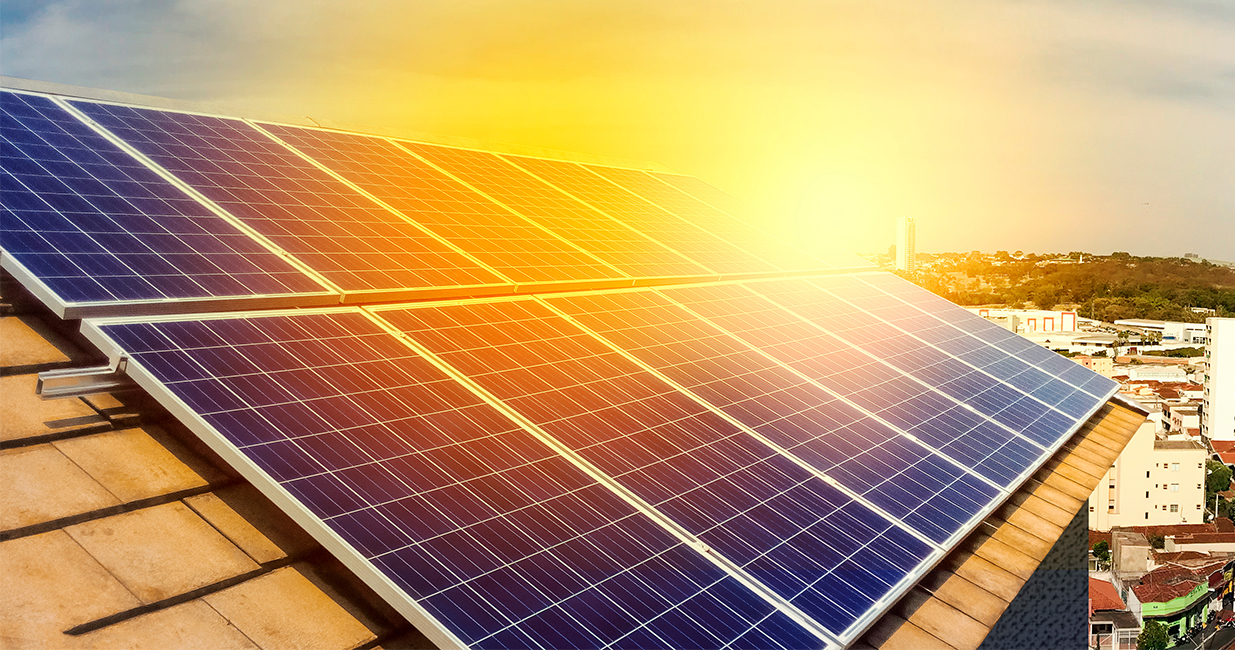
Now or never
Australia’s move toward a net-zero emissions future is accelerating, even in the absence of decisive federal policy leadership. Participants at the KangaNews Sustainable Debt Summit 2021 virtual event in June discussed the opportunities of a net-zero future and the risks of being left behind.

Chris Rich Staff Writer KANGANEWS
The urgency required effectively to tackle climate change is increasingly being realised by governments and companies around the world. Commitments to net-zero emissions and for science-based targets in line with a 1.5 degree future have skyrocketed.
The 2021 UN Climate Change Conference – also known as COP26 – scheduled for November is triggering another acceleration, with a raft of enhanced policy platforms timed to be in place for the event. The EU’s announcement of a proposed carbon border tax this year is among a litany of other significant global developments (see box on facing page).
Global capital markets are positioning themselves for what could be the greatest upheaval since the industrial revolution. Despite a federal government that continues to deflect at best and outright obstruct progress at worst, Australian companies and state governments are part of this rush.
For example, the New South Wales (NSW) government has committed to a 35 per cent reduction in emissions by 2030 and to reaching net zero by 2050. Key to achieving this is its electricity infrastructure roadmap – a coordinated plan to bring in renewable generation, new transmission and storage and firming infrastructure before the state’s coal-fired power stations come to the end of their lives in 2030.
The roadmap aims to deliver 12 gigawatts of renewable energy and two gigawatts of long-duration storage such as pumped hydro online by 2030.
Speaking at the KangaNews conference, Matt Kean, New South Wales government minister for energy and environment, confirmed that the state has added more than a gigawatt of generation capacity since it announced the roadmap in November last year.
As of May 2021, Kean continued, 127 distinct projects totalling more than 23 gigawatts of large-scale renewable-energy projects are either approved or progressing through the NSW planning system, representing about A$34.5 billion [US$25.3 billion] of investment.
Kean also revealed that there has been significant interest in the roadmap’s plans for renewable-energy zones. “Our renewable-energy resources, while massively abundant, are located in different parts of the state from our traditional energy sources,” he said. “Our designation of renewable-energy zones will bring several benefits to investors, such as improving network access certainty, reducing system security costs and streamlining our planning approval process.”
STRANDED COUNTRY RISK
The federal government’s approach involves a much shallower ascent to renewable-energy generation. It has set out on a technology-investment roadmap and “gas-led recovery” from the COVID-19 pandemic, claiming that the only way to wean Australia off coal-fired power stations is to replace them with gas-fired ones.
The federal government has committed to net-zero emissions but it has only made a vague commitment to delivery, “preferably” by 2050. Its 2030 target is to reduce carbon emissions by 26-28 per cent below 2005 levels – though its claims to be meeting this target are disputed.
It may be becoming more difficult for the federal government to obfuscate the national emissions trajectory. Australia boasts it has reduced its emissions significantly since 2005. But Tony Wood, director of energy at Grattan Institute, pointed out at the KangaNews conference that the net reduction – 100 million tonnes per year – is actually outweighed by the emissions benefit purely from reduction in land use and land clearing.
“The problem is those sectors are not expected to continue this level of contribution,” Wood said. “Forward projections say emissions from all but one of the sectors across the economy are flat or growing.”
He continued: “The only sector that looks like it is going to have some impact is electricity – and almost all of this is coming from rooftop solar. There are assumptions that could change the picture quite dramatically, but when you look at other sectors across the economy life gets hard. The idea that we are going to do it simply with ‘technology not taxes’ is nonsensical.”
Whatever the rationale for sluggish government action, speakers at the KangaNews event argued that it is having real, negative impacts on the Australian economy. State-government initiatives are picking up some of the slack, but the lack of an overarching policy framework has significant consequences for decision-making across sectors.
Because Australia does not have a synchronised policy landscape, the conundrums that decarbonisation presents are being managed in markets – with good intentions but in a largely piecemeal manner – which is resulting in poorer outcomes, said Zoe Whitton, executive director at Pollination Group. “For example, we have had a very bumpy experience in our electricity-market transition, particularly around the exit of coal and increasing renewable penetration.”
This does not mean no progress is being made. Indeed, Tim Nelson, associate professor at Griffith University and executive general manager, energy markets at Iberdrola Australia, said at the conference that the electricity sector is decarbonising a lot quicker than most anticipate – led by ambitious state-government policy. “The great opportunity with electrification is that we can do more to decarbonise transport as we rapidly decarbonise electricity,” he added.
Nelson cited the NSW state government’s target of 12 gigawatts of renewable energy by the end of the current decade as part of its roadmap as a significant driver of decarbonisation in Australia, alongside corporate and retail activity. He observed: “We are seeing more and more customers wanting to go 100 per cent green. They are thinking through firming issues associated with renewable supply.”
One of the challenges as the energy market transitions will be how Australia plugs a gap that cannot currently be filled by renewables. Wood told delegates Australia can source 90 per cent of its energy requirement from renewables, with the remaining 10 per cent needed to be sourced from elsewhere for “when the wind isn’t blowing and the sun isn’t shining”.
Gas is likely to have a role here, but not in the sense of a widespread shift from coal to gas. “We have to have alternatives and – as far as we can see, based on the information we have today – this is where we are likely to see a role for gas. But this has nothing to do with the government’s idea of a gas-led recovery, which is complete nonsense,” Wood said.
In this sense, the federal government’s suggestion that technological development has a role to play is not without merit. Wood suggested that solutions might be found over the next 20 years that allow Australia to get to 95-98 per cent renewables-based generation from 90 per cent. “But it is one of the key challenges ahead and it behoves industry and government to be thinking seriously about solutions,” he said.
However, the government’s lack of policy on energy and its decision directly to finance the construction of a new gas-fired power plant is making investment decisions in capital markets difficult, Whitton said. “This is not as much of a problem in regions like Europe, where the underlying policy landscape is relatively coherent and moving relatively quickly, and as such progress is smoother and less scary. The transition is easier for investors when they know where things are going,” she argued.
Capital managers have a huge role to play in funding transition in the energy sector and beyond. Again, though, lack of policy leadership is a constraint. For instance, Hesta plans to drive decarbonisation in the economy via whatever mechanisms it can use – but Sonya Sawtell-Rickson, the superannuation fund’s chief investment officer, said ultimately the most effective policy measure to reduce emissions would be a carbon price.
“Carbon pricing provides a market mechanism to price externalities and translates a difficult scientific concept into a financial concept, which is much easier for boards and management to digest and make decisions on,” Sawtell-Rickson commented. “It can help send messages on opportunities for investment, to reduce cost and ideally accelerate investment by facilitating true pricing of risk.”
Ironically, even as Australia is becoming increasingly stranded in its climate-policy stance, its potential to become a renewable-energy powerhouse remains enormous. Green hydrogen is some way off as a usable energy source but there is every reason to think Australia will be well placed to develop and export renewable energy, Nelson said.
Wood also pointed out that the International Energy Agency believes global demand for nickel, lithium and copper – all of which Australia has significant supply of – for things like battery manufacture could exceed the current US$400 billion per year demand for coal.
Global developments in sustainable finance
Sustainable-finance developments have accelerated globally over the past 12 months as the urgency required to tackle climate change effectively is increasingly factoring into market participants’ thinking.
Europe has long been a market leader in sustainable finance. The final report of the EU sustainable-finance taxonomy was released last year and is currently proceeding into legislative state, while at the same time more definitions are added in a wider range of sectors.
Eila Kreivi, director and head of capital markets at European Investment Bank in Luxembourg, told the KangaNews conference that the International Platform for Sustainable Finance, set up by the European Commission in 2019, put in place a working group for taxonomy harmonisation with other jurisdictions led by the EU and China.“The working group is not trying to implement the taxonomy’s rules everywhere but it is trying to establish a similar kind of architecture that would make the market more comparable across borders,” Kreivi said.
In late June, the European parliament also approved the European climate law.
NET-ZERO COMMITMENTS
With the majority of the heavy lifting being left to the private sector, attention in Australia is increasingly focusing on the commitments being made by individual companies. The challenge here is that companies have only limited capacity to influence other entities.
Scope-three emissions are rarely included in corporate net-zero commitments – largely because they are hard to measure and even harder to control. But tackling scope-three emissions may be essential if companies want meaningfully to reduce their impact on the environment.
On top of Lendlease’s net-zero by 2025 commitment for its scope-one and scope-two emissions, the firm has an absolute-zero carbon commitment by 2040 that includes scope-three emissions.
Cate Harris, group head of sustainability at Lendlease and global head of the Lendlease Foundation, explained that scope-three emissions represent a material amount of the company’s overall footprint and are an elephant in the room that needs to be addressed as part of the overall sustainability strategy.
Scope-three emissions for Lendlease range from the materials it uses in construction to tenant energy use within its buildings, as well as assets held by the company’s investment funds.
Reducing scope-three emissions to zero will be difficult, Harris acknowledged, but Lendlease has a plan in place. “At the end of the day, scope-three are the emissions we do not have direct control over – they are not operational emissions – so it is all about influence. Our five-step plan outlines two very important steps of working and collaborating with the two key stakeholder groups – our tenants and our supply chain.”
The all-encompassing nature of scope-three emissions presents challenges for all market participants. Investors, in particular large superannuation funds, face a huge challenge in measuring their own scope-three impact as they often own a slice of every aspect of the global economy, Kristian Fok, chief investment officer at Cbus Super, explained.
“Scope-three is quite complicated because we are in some sense double counting. On the flip side, it is a very relevant to the value of the assets we own. We do not have the tools yet, but it is very important to turn our mind toward how to do deal with scope-three,” he said.
As part of its commitments to reduce emissions, Fok said Cbus is working toward calculating its scope-three emissions. “We are doing things right now to identify the largest emitters we invest in and then work out how we engage with these investments. They are going to be adversely affected by the huge global action we are seeing right now, such as the European carbon border tax.”
Banks have also been working with clients on aligning their businesses with a net-zero future. National Australia Bank (NAB) signed up to the Collective Commitment to Climate Action (CCCA) – a global banking-sector initiative supporting the transition to a net-zero economy by 2050 – last year. This includes a commitment to aligning NAB’s lending portfolio with the goal to limit warming to well below two degrees and to strive for 1.5 degrees.
As part of this, Rosemary Bissett, head of ESG risk management at NAB, explained that the bank is working through sectors of its lending portfolio to set decarbonisation targets. “We are also working with our top 100 emitting clients on decarbonisation pathways and strategies to help finance their transition,” she added. “For the CCCA, we will need to set and publicly disclose long-term and intermediate targets to support meeting temperature goals.”
One of the main challenges in this space is attaining data and the consequences of shifting goalposts as new data come in. “The main task now is really to understand climate scenarios based on the science, as well as what transition means for different sectors and the rates at which they will have to decarbonise,” Bissett said.
THE ROAD AHEAD
Time is running out to achieve the goals of the Paris Agreement, and globally the signs are that the corporate sector as a whole has barely moved. Brendan Baker, ESG consultant, Australia and New Zealand at MSCI, highlighted a recent trends paper produced by MSCI covering 9,000 companies across 50 developed and emerging markets that together emit an estimated 11 gigatons equivalent of CO2 annually. The research found that just 3 per cent of this group has reduced direct and indirect emissions by an average of 8 per cent or more per year, the level needed to get down to net zero by 2050.
However, the pace at which companies are readying themselves or already undertaking transition activities is increasing, according to Wei Sue, system lead, sustainable corporates at ClimateWorks Australia.
ClimateWorks is an independent not-for-profit organisation within Monash University’s Monash Sustainable Development Institute, bridging research and action with an aim to achieve system-level transformation to achieve net-zero emissions by 2050.
One of its recent initiatives is the Net Zero Momentum Tracker, which seeks to normalise robust and credible net-zero targets and supporting strategies. The initiative collects and analyses Australian companies’ emissions-reduction commitments and actions, and assigns companies an ambition rating based on those commitments and the actions that have been taken or are planned to by achieved by 2050, Sue explained.
In the past year, the tracker has assessed 158 companies across seven sectors – superannuation, property, banks, transport, retail, resources and energy generation – covering approximately two-thirds of ASX200 market capitalisation and also about two-thirds of Australia’s national emissions.
There is a lot of discussion about the pathways for Australia to transition to a low-carbon economy. Attention is also turning toward how this transition can be equitable and just. A “just transition” involves ensuring the transition to net zero considers the most affected workers, communities and regional economies, explained Kylie Porter, executive director at Global Compact Network Australia (GCNA).
GCNA is the Australian local network of the UN Global Compact, the world’s largest corporate-sustainability initiative. Its participants include many of Australia’s leading businesses, civil-society organisations and universities. Its goal is to advance responsible business practices and the private sector’s contribution to sustainable development. As part of this, Porter explained GCNA is working alongside businesses to implement a just transition perspective in their operations.
While companies have mainly been responding to climate change by disclosing their own climate-risk exposures and setting emissions-reduction targets, Porter said more needs to be done. “A just and credible transition needs coordinated, long-term planning with engagement and collaboration between business, government, investors, the financial-services sector, workers, unions and the community to develop a pathway that meets the goal of the Paris Agreement.”

HIGH-GRADE ISSUERS YEARBOOK 2023
The ultimate guide to Australian and New Zealand government-sector borrowers.

WOMEN IN CAPITAL MARKETS Yearbook 2023
KangaNews's annual yearbook amplifying female voices in the Australian capital market.

SSA Yearbook 2023
The annual guide to the world's most significant supranational, sovereign and agency sector issuers.
















